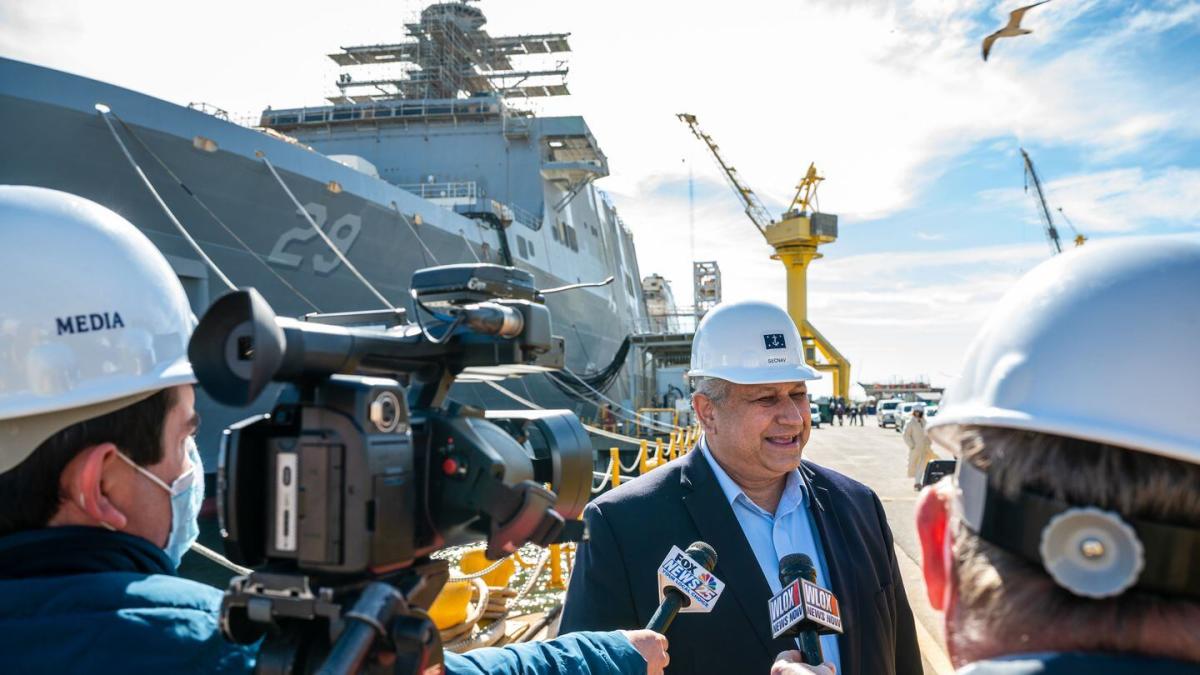The size of the U.S. Navy’s fleet and the debate over how to increase it took center stage at a Senate Appropriations defense subcommittee hearing Tuesday.
In particular, senators expressed concern after a recent study found multiple important shipbuilding programs are running years behind schedule.
The delays come “despite unprecedented support by Congress. Headlines and delays like this should constitute a full-blown emergency for the Navy and the shipbuilding industry,” Subcommittee chairman Jon Tester, D-Montana, told Navy Secretary Carlos Del Toro, referring to the delays as “a major problem that puts our national security at risk.”
“I know there’s no quick fixes, but I’ve yet to see what either party is prepared to do about it, and to be specific, who is being held accountable.”
Del Toro largely put the blame on industry.
The secretary noted, as the review’s leaders did when briefing the press, the review found some ship programs suffered from first-in-class challenges, lacked design maturity or were hurt by a shortage of design and blue-collar workers.
But Del Toro added “it was also determined that shipyards simply aren’t making enough of a contribution on their own to increasing their own production rates at their own shipyards.”
“We’re making a $15 billion investment over the course of the next five years, money that’s taxpayers’ money, and at the same time, many of these shipyards are actually making stock buyback programs where they’re buying back stocks to the tune of $4 billion and upwards of that,” he continued. “That’s unforgiveable. We need them to invest in their own shipyards just as much as the American taxpayer is investing in the budget to get these production lines back up” and delivering on time.
Tester called the stock buybacks “incredibly irresponsible” and said companies ought to prioritize on-time and on-budget ship deliveries. “We will do whatever we can do to make sure they have a workforce, but damn it, they gotta step up to the plate.”
Del Toro first criticized industry for buying back stocks despite program delays and cost-overruns at the WEST conference in February.
Industry has pushed back. HII, for example, told investors last month it had spent $4.1 billion over the last 10 years on facilities and technology at its Ingalls and Newport News shipyards.
It spent 4.9% of its revenue on capital expenditures in 2017, 2018 and 2019. While it reduced that figure after the pandemic hit in 2020, chief executive Chris Kastner has vowed to invest 5% of revenue a year for the next three years.
Kastner also told reporters this month the company and Navy collectively had spent hundreds of millions of dollars to develop a larger, better trained workforce and to outsource work to smaller vendors — including more than 200 new companies since 2020 — in regions of the country where the manufacturing workforce isn’t as stretched thin.
Following the April 16 hearing and Del Toro’s comments on industry, HII spokesman Danny Hernandez told Defense News the company agrees with him. “We are committed to investments in workforce, facilities and suppliers, and will continue partnering with the Navy in doing so.”

Later in the hearing, Sen. Lindsey Graham, R-S.C., blamed the Navy for not having a better plan to grow the fleet. He and Del Toro debated who’s to blame for the Navy’s fiscal 2025 budget request growing less than 1% over the FY24 spending plan.
“We’re saying one thing and doing another,” Graham said of the Navy not funding its shipbuilding plan. “We talk about a Navy that can confront threats that are growing, and our budgets do not meet the needs of this country by a factor of a bunch.”
The senator asked Navy leaders to commit to working on a plan to actually achieve the Navy’s goals for manned and unmanned ships by 2043, as outlined in the long-range shipbuilding plan but not, he said, supported by the spending request.
